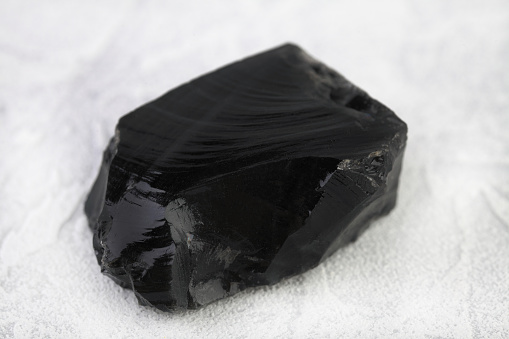
Cristobalite Market: Introduction
The global cristobalite market was valued at US$ 30.52 Mn in 2019. It is anticipated to expand at a CAGR of ~6% during the forecast period. The global cristobalite market is driven by increase in the demand for cristobalite in the artificial marble industry across the globe. Asia Pacific accounts for a major share of the global cristobalite market, led by high demand for cristobalite among manufacturers of paints and coatings in the region. Cristobalite is primarily utilized in construction-related activities. Other uses include manufacture of glass and ceramics. Cristobalite is employed in the manufacture of water glass (sodium silicate), which is used in the formulation of cement, passive fire protection, textile and lumber processing, manufacture of refractory ceramics, adhesive, and production of silica gel. In ceramics, cristobalite is employed in the manufacture of sanitary ware and as raw material for ceramic body for tiles.
Request Brochure@
https://www.transparencymarketresearch.com/sample/sample.php?flag=B&rep_id=50745
The ceramic industry primarily consists of tiles, sanitary ware, tableware, and technical ceramics. Tiles hold a prominent share of the global ceramics market. According to the Ceramic World Web, the global production of ceramic tiles reached 13,099 million square meters in 2018, while global consumption of ceramic tiles reached 12,818 million square meters in the same year. Cristobalite is primarily utilized in the artificial marble industry. Artificial marble offers consumers an affordable alternative to natural marble, while maintaining a high level of color consistency and strength. Artificial marble is mostly a mixture of polymer binders and mineral fillers such as cristobalite. Cristobalite flour is used as an inert and white filler in the manufacture of artificial marble. Excellent chemical inertness and mechanical strength of cristobalite make it a usable filler for artificial marble. Artificial marble is extensively utilized for flooring, walls, countertops, staircases, window sills, door sills, door jams, and sink tops. Thus, increase in the demand for glass & ceramics and artificial marble is likely to boost the demand for cristobalite during the forecast period.
REQUEST FOR COVID19 IMPACT ANALYSIS –
https://www.transparencymarketresearch.com/sample/sample.php?flag=covid19&rep_id=50745
Rise in Demand for Paints & Coatings, and Investment Casting to Offer Lucrative Opportunities for Cristobalite Market
Cristobalite is employed as a filler in the manufacture of paints & coatings. It has fairly high hardness; consequently, it provides abrasion and scratch resistance to coatings. Cristobalite contributes to the visibility of road-marking paints as a filler with maximum brightness. Commonly used ingredients employed in the formulation of investment powder are gypsum, quartz, and cristobalite. Cristobalite, which is the principal ingredient used in investment casting, provides high thermal expansion and high temperature thermal shock resistance. Investment casting is utilized in a wide range of applications such as dental casting materials and gold castings. For dental purposes, cristobalite is used in the production of dental impression materials and models of teeth. Cristobalite enables excellent dyeability and desired elasticity of the impression compound. Thus, an increase in the demand for paints & coatings and investment castings is estimated to augment the global cristobalite market.
Health Hazards and Number of Substitutes to Hamper Cristobalite Market
Cristobalite appears on the ‘Right to Know Hazardous Substance List.’ Two polymorphs of crystalline silica – quartz and cristobalite – have been classified as Group 1 carcinogens by the International Agency for Research on Cancer (IARC). Health hazards associated with exposure to crystalline silica arise from the inhalation of respirable particles. Respirable crystalline silica consists of particles that are smaller than 10 µm in aerodynamic diameter. Cristobalite can be replaced by quartz, barium sulfate, calcium carbonate, diatomaceous earth, dolomite, feldspar, glass powder, kaolin, mica, microspheres, silica, and talc. The enactment of stringent government regulations on the production of cristobalite is restraining the market.
Asia Pacific Dominates Cristobalite Market
Based on region, Asia Pacific accounted for a major share of the global cristobalite market in 2019. The demand for artificial marble is high in the region, especially in China, Japan, and South Korea. China is projected to lead the market in Asia Pacific over the next few years, due to rise in consumer preference for cool white countertops in the country. Additionally, increase in building and construction activities across Asia Pacific is boosting the demand for cristobalite in cement and road marking applications. This, in turn, is driving the cristobalite market in Asia Pacific. Cristobalite is extensively employed as a raw material in the manufacture of silica-based chemicals such as silica gel. Rise in foreign direct investment in the building & construction industry in China and India is anticipated to further boost the demand for cristobalite in these countries.
Consolidated Nature of Cristobalite Market
The cristobalite market is dominated by large numbers of major players operating across the globes. The top three players — SCR-Sibelco NV, Silmer SA, and Hoben International Limited — cumulatively accounted for 91.6% share in 2019. SCR-Sibelco NV held 67.3% share of the global cristobalite market in 2019. The company’s success is primarily ascribed to its consistent production capacity expansion and development of new products. Silmer SA occupied 9.9% share of the cristobalite market in 2019, while Hoben International Limited constituted 14.4% share in the same year.





